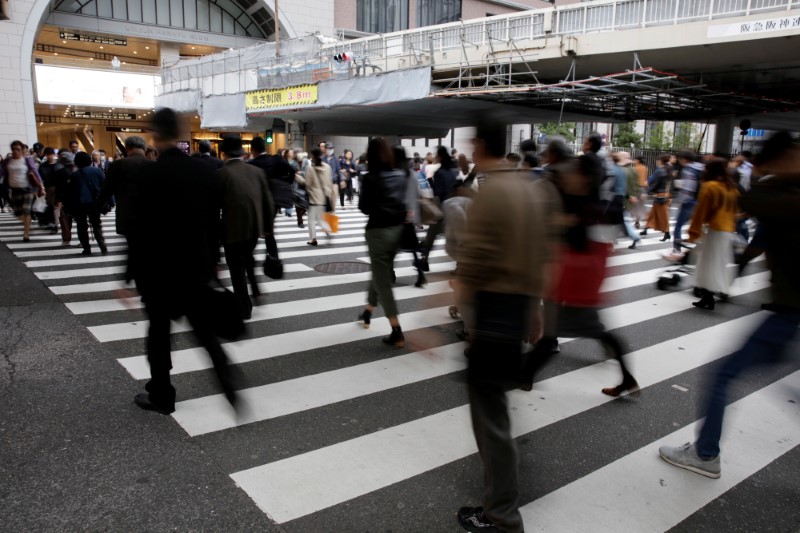By Stanley White
TOKYO (Reuters) – Labor demand in Japan rose in December to its highest in more than 40 years, which could help workers pressing for bigger pay increases at annual wage negotiations and push stubbornly slow consumer price growth towards policymakers’ inflation target.
The strong labor market data out on Tuesday suggests employers may be more likely to heed the government’s call to raise wages by 3 percent or more at annual negotiations with unions – increasing the prospects for consumer spending and inflation to pick up.
“The labor market is tight, and companies are having trouble hiring workers, so this puts some upward pressure on wages,” said Hiroshi Miyazaki, senior economist at Mitsubishi UFJ Morgan Stanley Securities.
Retail sales jumped a hefty 3.6 percent in December from a year earlier, handily topping a median market forecast for a 1.8 percent increase, and the biggest annual increase since the 4.9 percent seen in April 2015, when retail sales rebounded sharply after a sales tax increase the previous year.
“It’s fair to say consumer spending will remain in a gradual recovery trend,” Miyazaki added.
The jobs-to-applicants ratio rose to 1.59 from 1.56 in November, which is more than the median forecast of 1.57 and the highest since January 1974.
The seasonally adjusted unemployment rate edged up to 2.8 percent from 2.7 percent in November, data from the Internal Affairs ministry showed. Economists’ median forecast was for the jobless rate to remain at 2.7 percent, the lowest since November 1993.
The jobless rate rose slightly as some people voluntarily left jobs to find better work, an internal affairs ministry official said.
The labor participation rate for men was 83.2 percent, up 0.6 percentage point from a year earlier, while the labor participation rate for women was 68.2 percent, up 1.4 percentage points from a year ago as government policies drew more women into the workforce.
In addition to the increase in female workers, Japan has also been recruiting foreign workers to ease labor shortages.
In October 2017 the number of foreign workers in Japan was 1.3 million, the highest on record, separate data from the labor ministry showed.
“One widely-overlooked factor driving Japan’s growth in recent years has been a surge in the number of foreign workers,” Marcel Thieliant, senior Japan economist at Capital Economics said in a research note.
“This appears to be continuing as employers face labor shortages and recent legal changes have made it easier for foreigners to work in the country.”
To be sure, there is still some reason to be cautious about how much wages will rise. Two-thirds of Japanese firms think the government’s push to raise wages by 3 percent is a tall order, with some dismissing it out of hand, a Reuters survey last month showed.
Japan’s Keidanren business lobby has thrown its considerable weight behind the government’s push for big cash-rich companies to raise wages by 3 percent or more this year.
Some companies have little choice but to raise wages as they battle to secure workers in the face of the labor shortage, economists say.
Japan logged seven straight quarters of economic expansion to end-September, its longest uninterrupted stretch of growth since 1994. Exports have been robust, corporate profits are near record highs, and Tokyo stocks are at their highest in 26 years.
The improving economic outlook has increased expectations that Japan’s consumer prices will start rising more quickly, making it easier for the Bank of Japan to meet its 2 percent inflation target.
Japanese household spending, which is different from retail sales because it is based on surveys sent to a small sample of consumers, fell 0.1 percent in December from a year earlier in price-adjusted real terms.
This is counter to economists’ median estimate of a 1.7 percent annual increase, but an unusually large 23.3 percent annual decline in spending on home repairs pulled down household spending in December.
(Reporting by Stanley White; Editing by Eric Meijer)



















